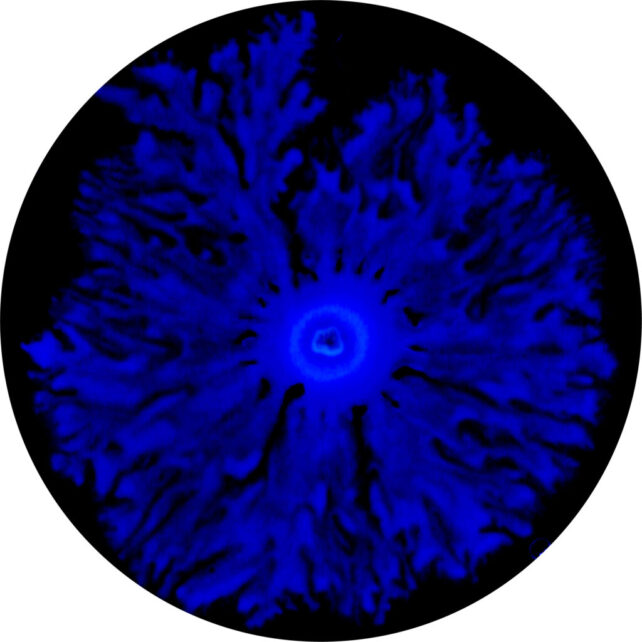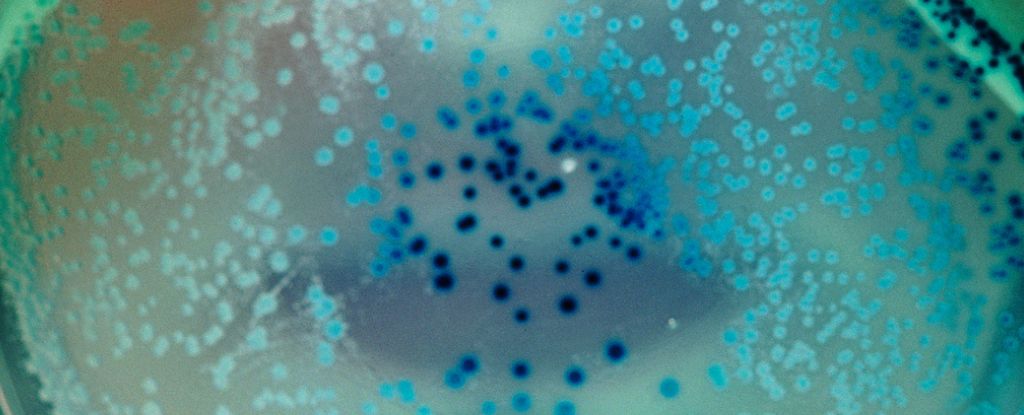Products You May Like
A single-celled organism with no brain or nervous system to speak of may still form memories and pass those memories on to future generations, according to new research.
The ubiquitous bacterium, Escherichia coli, is one of the most well-studied life forms on Earth, and yet scientists are still discovering unexpected ways that it survives and spreads.
Researchers at the University of Texas and the University of Delaware have now uncovered a potential memory system that allows E. coli to ‘remember’ past experiences for several hours and generations thereafter.
The team says that, to their knowledge, this kind of bacterial memory has not been unearthed before.
Obviously, the memory that scientists are discussing in this case is not the same as conscious human memory.
The phenomenon of bacterial memory instead describes how information from past experiences influences current decision-making.
“Bacteria don’t have brains, but they can gather information from their environment, and if they have encountered that environment frequently, they can store that information and quickly access it later for their benefit,” explains lead researcher molecular bioscientist Souvik Bhattacharyya from UT.
Bhattacharyya and their team’s findings are based on strong associations from more than 10,000 bacterial ‘swarming’ assays.
These experiments were testing to see if E. coli cells on a single plate would swarm together into one migrating mass that moves with the same motor. Such behavior generally indicates that cells are joining up to efficiently search for a suitable environment.
On the other hand, when E. coli cells clump together into a sticky biofilm, it’s their way of colonizing a nutritious surface.
In initial experiments, researchers exposed E. coli cells to several different environmental factors to see which conditions triggered swarming the fastest.
Ultimately, the team found that intracellular iron was the strongest predictor of whether the bacteria moved or stayed.
Low levels of iron were associated with faster and more efficient swarming, whereas higher levels led to a more settled lifestyle.

Among first-generation E. coli cells, this seemed to be an intuitive response. But after experiencing just one swarming event, cells that experienced low iron levels later in life were even faster and more efficient at swarming than before.
What’s more, this ‘iron’ memory was passed on to at least four successive generations of daughter cells, which are formed from the mother cell splitting into two new cells.
By the seventh generation of daughter cells, that iron memory was naturally lost – although it could be regained if scientists artificially reinforced it.
The authors behind the study have yet to identify a molecular mechanism behind the potential memory system or its inheritability, but the strong association between intracellular iron and intergenerational swarming behavior suggests there is a level of persistent conditioning at play.
While epigenetics is known to play a role in passing ‘remembered’ biological settings through generations of E. coli by regulating ‘on’ and ‘off’ settings of specific genes, the researchers believe the short duration of heritability means this is not the primary mechanism here.
Iron is connected to multiple stress responses in bacteria. For an intergenerational memory system to form around it makes a lot of evolutionary sense.
An iron-based memory system might help E. coli adapt to poor environmental conditions or antibiotics.
A single E. coli cell can double within half an hour, so the ability to pass on such a memory to daughter cells is probably also beneficial in slow-changing environments.
“Before there was oxygen in the Earth’s atmosphere, early cellular life was utilizing iron for a lot of cellular processes,” says Bhattacharyya.
“Iron is not only critical in the origin of life on Earth, but also in the evolution of life. It makes sense that cells would utilize it in this way.”
“Ultimately,” Bhattacharyya concludes, “the more we know about bacterial behavior, the easier it is to combat them.”
The study was published in PNAS.
